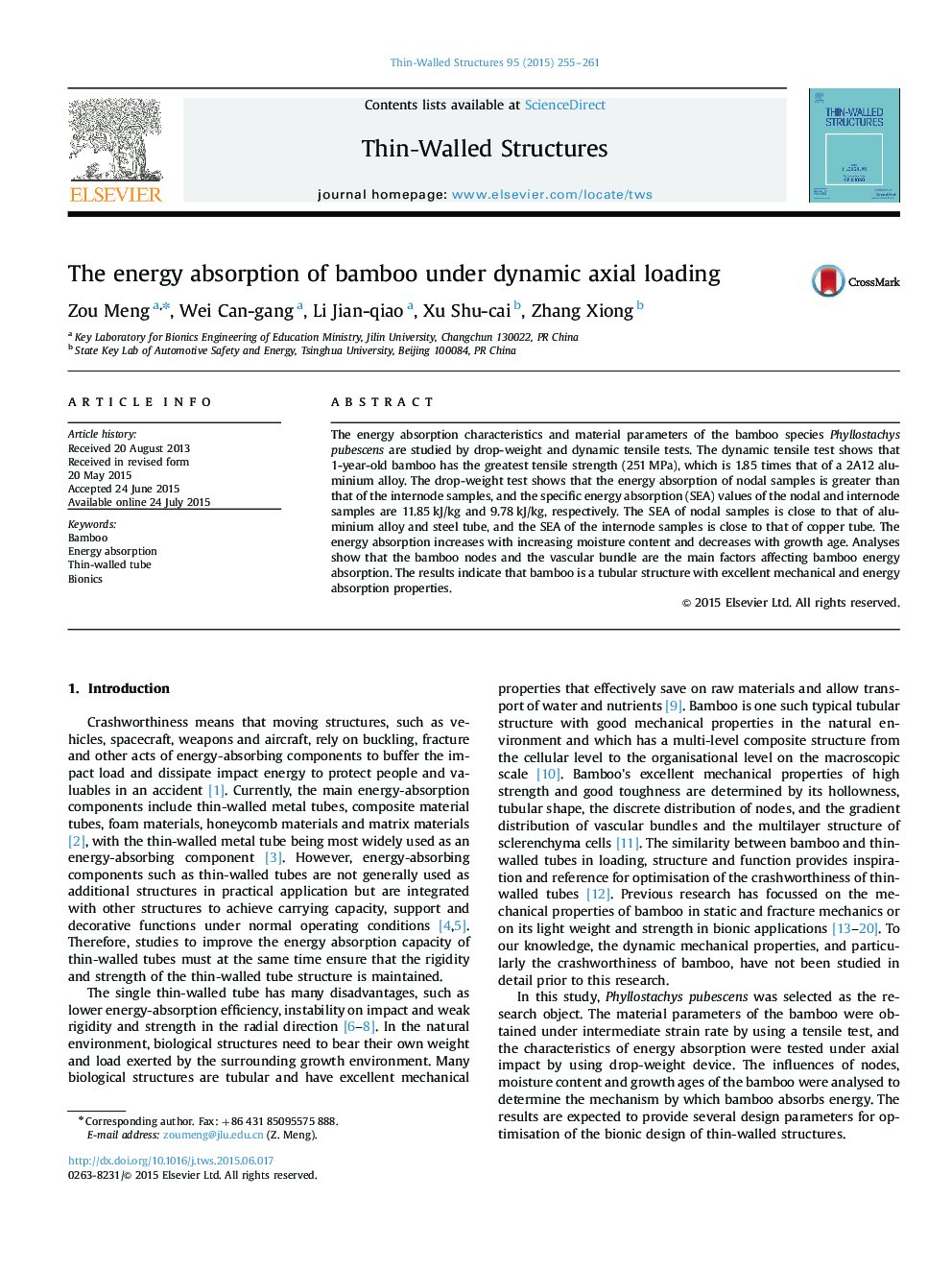| Article ID | Journal | Published Year | Pages | File Type |
|---|---|---|---|---|
| 308700 | Thin-Walled Structures | 2015 | 7 Pages |
•Energy absorption of bamboo was studied by drop-weight test at axial dynamic loads.•Nodal and vascular bundle were main factor to affect the bamboo energy absorption.•SEA of nodal sample was better than copper tube and close to steel and aluminium tubes.•Design a bionic absorption energy structures inspired by bamboo need future research.
The energy absorption characteristics and material parameters of the bamboo species Phyllostachys pubescens are studied by drop-weight and dynamic tensile tests. The dynamic tensile test shows that 1-year-old bamboo has the greatest tensile strength (251 MPa), which is 1.85 times that of a 2A12 aluminium alloy. The drop-weight test shows that the energy absorption of nodal samples is greater than that of the internode samples, and the specific energy absorption (SEA) values of the nodal and internode samples are 11.85 kJ/kg and 9.78 kJ/kg, respectively. The SEA of nodal samples is close to that of aluminium alloy and steel tube, and the SEA of the internode samples is close to that of copper tube. The energy absorption increases with increasing moisture content and decreases with growth age. Analyses show that the bamboo nodes and the vascular bundle are the main factors affecting bamboo energy absorption. The results indicate that bamboo is a tubular structure with excellent mechanical and energy absorption properties.
